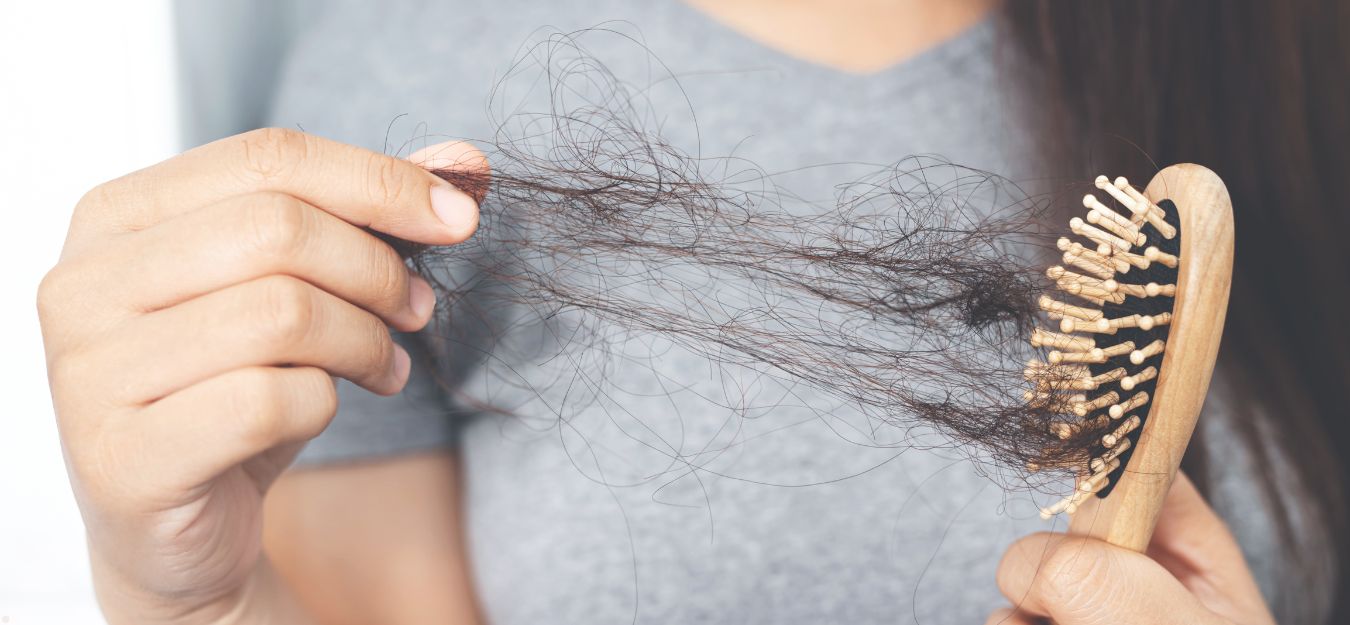Your Essential Guide to Managing Hair Loss
Alopecia, a condition where hair falls out in patches or large clumps, affects many adults. With so many treatment options available, it is important to understand what each method offers. In this article, we explain various alopecia treatment options and point out common signs of alopecia hair loss.
11 Alopecia Treatment Options
1. Litfulo
Litfulo (ritlecitinib) is a prescription pill used to treat severe alopecia areata in adults and adolescents aged 12 and older. It works by targeting specific proteins within the immune system that mistakenly attack hair follicles, leading to hair loss. By blocking these proteins, Litfulo helps reduce the immune system's attack on hair follicles, allowing hair to regrow. In clinical studies, some patients experienced significant hair regrowth, with 23% achieving 80% or more scalp hair coverage after nearly six months of treatment.
2. Minoxidil
Minoxidil is a well-known topical treatment used to slow down hair loss and encourage regrowth. It comes as a liquid or foam that is applied to the scalp. By increasing blood flow around the hair follicles, minoxidil can help stimulate hair growth in areas where hair is thinning.
3. Corticosteroids
Corticosteroids are powerful medicines that reduce inflammation and suppress the immune system. They can be applied as creams, injections or oral medications. This treatment is often given when the hair loss is thought to be driven by the body's immune system attacking the hair follicles.
4. Platelet-Rich Plasma (PRP)
Platelet-rich plasma therapy uses the patient’s own blood. After a small amount of blood is drawn, it is processed to concentrate the platelets. The resulting plasma is then injected into the scalp to help stimulate the hair follicles and promote growth.
5. Phototherapy
Phototherapy is a treatment that involves exposing the scalp to specific wavelengths of light. This form of therapy is thought to help by reducing inflammation and stimulating the cells in hair follicles. It can be used alongside other treatments and might be especially useful for those with certain types of alopecia where light therapy can calm the autoimmune reaction.
Related Search Topics (Ads)
6. Topical Immunotherapy
This treatment involves applying chemicals to the scalp to create a mild allergic reaction. In turn, the body’s immune system is redirected, which can prompt hair growth in areas that had experienced hair loss.
7. Acupuncture
Acupuncture is an alternative treatment that has been used for a variety of health issues, including hair loss. It involves inserting very thin needles into specific points on the body. Some people believe that acupuncture helps to balance the body’s energy and improve blood flow to the scalp.
8. Anthralin
Anthralin is a synthetic, tar-like drug that works by altering the immune response in the body. It can be applied directly to the affected areas on the scalp for a short period before being washed off. This treatment may irritate the skin, so it is often used in carefully controlled doses.
9. Cryotherapy
Cryotherapy means freezing the skin with liquid nitrogen. For alopecia, this technique is used to destroy the immune cells in the area of hair loss, which might allow new hair to grow. Cryotherapy is usually performed in a doctor’s office, and patients might feel a cold, stinging sensation during the treatment.
10. Excimer Laser Therapy
Excimer laser therapy uses targeted beams of light to treat small areas of the scalp. This therapy works by reducing inflammation and calming the local immune response. It can be helpful for patients with small patches of hair loss.
11. Retinoic Acid
Retinoic acid is a form of vitamin A that is sometimes combined with other treatments to increase their effectiveness. It works by helping to speed up the cell turnover process and can assist in restoring hair growth when used with other medications like minoxidil.
Common Signs of Alopecia
Patches of Hair Loss
The most recognizable sign of alopecia is the appearance of small or large patches on the scalp where hair is absent. These spots can gradually enlarge or appear suddenly and they may be round or irregular in shape.
Nail Pitting
Some people with alopecia notice small dents or pits in their fingernails. Nail pitting can be a sign that the condition is linked with an autoimmune response.
Follicular Ostia
Follicular ostia are the small openings in the skin where hairs normally grow. In alopecia, these openings may appear more visible.
Itchy Patches
Alopecia can sometimes be accompanied by an itchy sensation on the scalp. This itchiness might lead to irritation or scratching, which can worsen the hair loss or cause skin damage.
Hair Loss Patches that Change Color
The skin in the areas of hair loss can sometimes change color. This may happen as the skin heals or reacts to the treatment.
Cadaver Hairs
Cadaver hairs are short, broken hairs that sometimes remain on the scalp. They look like tiny remnants sticking out among the bald areas.
Exclamation Point Hairs
Named for their narrow base at the scalp and thicker tip, these hairs are typically softer and weaker than normal hair and can break off easily.
White Hair Growth
In some cases, new white or gray hairs can grow in the areas affected by alopecia. White hair growth may signal that regrowth has begun, even if the new hair color is different from the original color.
Final Notes
Alopecia and its associated hair loss can be a challenging condition to live with. It is important for anyone experiencing these symptoms to consult a healthcare professional to find the most suitable treatment plan based on their condition. With proper management and a tailored approach, many adults can see improvement in hair growth and overall skin health.

